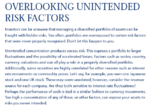Hi all,
I just thought I'd raise this (maybe controversial) point. All new traders are taught have your winners bigger than your losers. Thats fine, im not saying this is wrong, but I feel the logic is flawed.
The argument supporting this is you are rewarded twice as much for every time you are right (in a 1:2 risk reward example). However this implies your odds of having a winning trade are 50/50. They are not.
Assuming no slippage and commission (an ideal world) and you have a 1:1 risk reward profile the odds of you winning are 50%. You can flip a coin randomly in the market and you would win 50% of the time. After a couple of hundred trades flipping a coin you would be break even on ticks (again assuming no trading costs).
HOWEVER, if you risk 1 to make 2 the odds are not 50/50 because you are expecting the market to move twice as far in your favour to make a profit. To use the coin example again, 1:1 risk reward is a 0.5% chance of winning. However a 1:2 risk reward the odds of you winning are 0.5 x 0.5 = 0.25% chance of winning.
So again if we were to trade randomly following a strict risk reward of 1:2 (with no slippage and commissions) and you entered long on heads with a target of 12 ticks and a stop of 6 ticks (and vice versa) after a couple of hundred "spins" you would have won about 25% of the time and be about flat on ticks.
So, lessons I feel can be learned, if you are a new trader provided you stick with exactly the same risk reward profile on every trade (so the probabilities balance out) you do not have to have winners bigger than your losers. You will not make anymore money but I feel it is easier to stick to a plan that results in a winner every other trade than one that results in a winner every third trade. It will help confidence.
Also, this does not teach you how to have an "edge" in the market, thats up to you, but with a consistent risk:reward profile and consistent position sizing even random trading can keep you from quick blow outs.
Of course we have trading costs, so a 1:1 risk reward in theory is 50%, but after costs its more like 45% expectancy. Hence this is a negative sum game. However, if after years of studying the markets you can improve on randomness by 6% (not sure how this is expressed in mathematical terms) you now have a positive expectancy and are a profitable trader!
Please feel free to correct me if I am wrong, just highlighting its about expectancy not risk:reward which is where most people start (and stop) their learning. The greater your risk: reward ratio the lower your win rates will be. Why harp on about the risk 1 to make 3 all the time?

